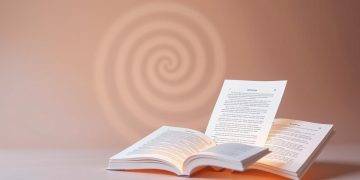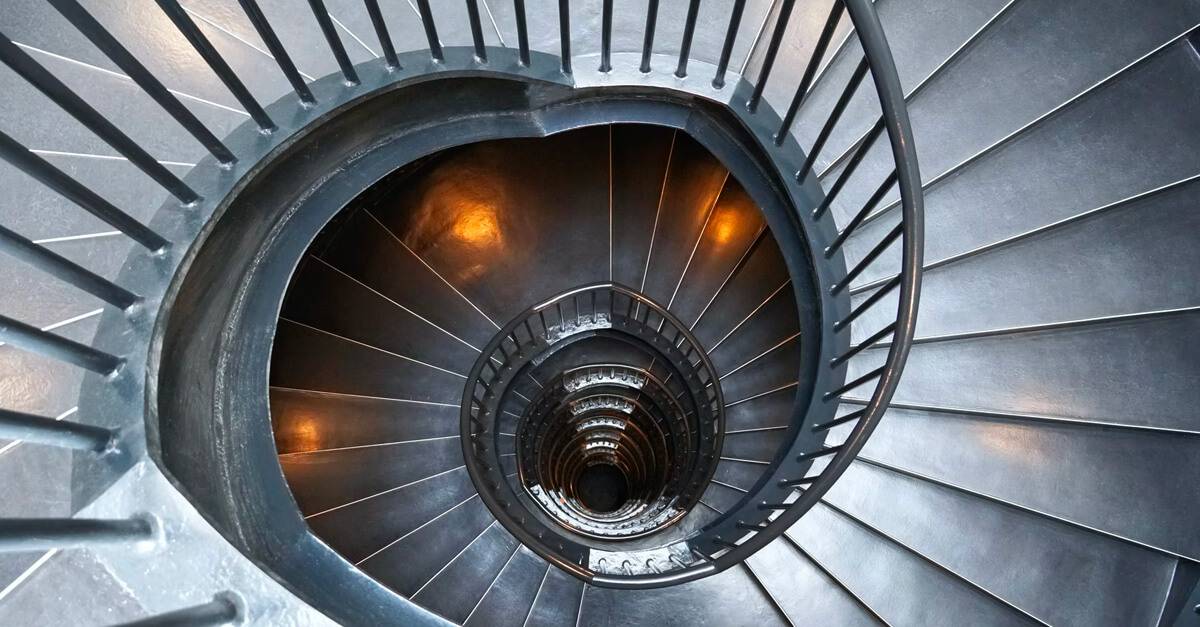“The mind is everything. What you think you become.” – Buddha. This saying shows the huge power of your thoughts and subconscious mind. In today’s busy world, daily self-hypnosis can change your life. It boosts your productivity and helps you grow personally.
Self-hypnosis lets you control your mind in a safe way. It’s backed by science and helps you reach deep into your subconscious. By using self-hypnosis, you can lower stress and anxiety. You’ll also make positive changes in your life, at work and at home. This guide will show you the many benefits of self-hypnosis and how to make it part of your daily life.
Key Takeaways
- Self-hypnosis boosts your productivity and helps with personal growth.
- Daily practice can greatly reduce stress and anxiety.
- You can use self-hypnosis anytime, without needing special gear.
- Good techniques can improve sleep and help with pain.
- Your subconscious can be a big help in reaching your goals.
- Mindfulness and positive thinking are key parts of self-hypnosis.
- Understanding your mind can lead to big personal changes.
Understanding Self-Hypnosis
Let’s clear up some confusion about self-hypnosis. It’s not some magical state but rather a focused mental state. This focus helps you skip over critical thinking and connect with your subconscious mind. Your subconscious mind deeply influences your beliefs, habits, and feelings.
Definition and Misconceptions
Many people get self-hypnosis wrong. They think it needs a hypnotist or that you lose control, but that’s not true. Actually, it lets you make positive changes in your life by creating your own suggestions in a calm state. Starting with self-hypnosis can help you overcome negative thoughts and grow personally with regular practice.
The Role of the Subconscious Mind
Your subconscious mind is incredibly powerful, controlling many of your automatic actions. Learning about self-hypnosis shows how to change these habits. By practicing self-hypnosis, you can reprogram your mind to tackle challenges and reach your goals. Studies show it helps with pain, sleep, and stress.
The Science Behind Self-Hypnosis
The science of self-hypnosis shows us how it works on both the brain and mind. It changes the brain and helps people who use it often. This makes it a powerful tool for personal growth.
Neurological Changes During Hypnosis
Self-hypnosis changes the brain in special ways. It shifts brainwave patterns. People may feel more relaxed and creative during sessions.
This change makes the mind open to positive ideas. This is key to self-hypnosis working well.
Psychological Benefits of Self-Hypnosis
Self-hypnosis helps reduce stress and anxiety. It makes you clearer in your thoughts and more focused. This helps you understand your feelings better.
This deeper understanding changes how you face challenges. It gives you tools to handle stress better.
Behavioral Outcomes of Regular Practice
Regular self-hypnosis practice has big benefits. It can improve many parts of your life, like:
- Enhanced learning and retention of new information
- Increased productivity through better time management
- Improved self-discipline, making it easier to stick to personal goals
- Reduction in unhealthy habits, such as smoking or overeating
These benefits lead to personal growth and healthier choices. Self-hypnosis helps you make positive changes. It boosts your confidence and purpose in life.

| Outcome | Description |
|---|---|
| Stress Reduction | Helps manage and lower daily anxiety levels. |
| Improved Focus | Enhances clarity in decision-making and goal setting. |
| Behavior Modification | Aids in eliminating negative habits and fostering positive ones. |
| Creativity Boost | Facilitates a state conducive to creative thinking and problem-solving. |
How to Practice Self-Hypnosis Daily
Starting a daily self-hypnosis practice can greatly improve your experience and outcomes. A good routine in a supportive setting helps with relaxation and focus. This guide will show you how to set up a great self-hypnosis space and stick to a daily routine.
Creating a Conducive Environment
The right *self-hypnosis practice environment* is key for focus and relaxation. Here are some tips to get your space ready:
- Select a quiet area where interruptions are unlikely.
- Consider using dim lighting to create a calm atmosphere.
- Choose comfortable seating, allowing your body to feel supported.
- Eliminate any distractions, such as electronics or noise.
- Incorporate soothing elements, like soft music or calming scents, to enhance relaxation.
Developing Your Self-Hypnosis Routine
Having a consistent daily self-hypnosis routine is crucial for getting the most out of it. Here’s how to make a good routine:
- Set aside dedicated time each day for your sessions, even if it’s just 3-5 minutes.
- Begin with slow, deep breaths to transition into a relaxed state.
- Incorporate positive affirmations relevant to your goals, remembering to use present tense. For example, say to yourself, *“I am confident and composed.”*
- Visualize comforting scenes, such as water flowing over your feet, to enhance relaxation.
- After reaching a relaxed state, gradually transition back to waking consciousness by counting slowly from 1 to 5.
Sticking with this *how to practice self-hypnosis daily* effort is key. As you get more comfortable, you’ll find it easier to enter a hypnotic state and see better results. Adding these steps to your daily routine can lead to better well-being and personal growth.
Effective Self-Hypnosis Techniques
Exploring self-hypnosis can change how you relax and grow personally. Each technique is a way to connect with your subconscious mind. It helps remove barriers and boosts your well-being. Here are some key techniques to try:
Progressive Muscle Relaxation
Progressive muscle relaxation is a basic self-hypnosis method. It involves tensing and relaxing different muscle groups in your body. This practice helps you feel both physically and mentally relaxed.
Start with your toes and move up, creating a wave of relaxation. This leaves you feeling calm and open to new ideas.
Visualization Techniques
Visualization in self-hypnosis helps you create vivid mental pictures. Picture peaceful scenes, success, or your goals. This helps your subconscious mind work towards what you want.
Imagine walking down a staircase and stepping into a peaceful pool. This brings calm and focus, helping you reach your goals.
Using Affirmations
Using affirmations in self-hypnosis is a strong way to change. Say positive statements that match your goals to replace negative thoughts. Make your affirmations in the present or future tense for best results.
This practice helps you stick to your goals and change your behavior and beliefs. It also changes how you see yourself.

Creating a Customized Self-Hypnosis Script
Making your own self-hypnosis script can really boost your practice. It helps you reach your goals. First, know what you want to achieve with self-hypnosis. This will guide what you put in your script, making it powerful for change.
Identifying Your Goals
Start by setting clear goals for your self-hypnosis. Do you want to reduce stress, boost confidence, or stop nail biting? Knowing what you want helps you make a script just for you. Think about these steps:
- Write down your main self-hypnosis goals.
- Think about what stops you from reaching these goals.
- Put your goals in order of what’s most important to you.
Structuring Your Script for Success
A good script helps you relax and sets affirmations that match your dreams. Start with a calming induction to relax your mind and body. Then, use deepeners to deepen your trance, and suggest things that help you reach your goals. Visualizations make your dreams feel real and within reach.
When making your script, keep it logical and easy to follow. Repeat important messages to your subconscious. Here are key parts to include in your script:
| Script Element | Description |
|---|---|
| Induction | Helps you relax, getting ready for deeper work. |
| Deepeners | Makes you even more relaxed to take in suggestions better. |
| Therapeutic Suggestions | Positive sayings made just for your goals. |
| Visualizations | Images that match your dreams, helping you see success in your mind. |
| Reorientation | Slowly brings you back to being awake, ending the session well. |
Benefits of Daily Self-Hypnosis Practice
Adding self-hypnosis to your daily life can change your life for the better. It makes your mind sharper and helps you handle stress and anxiety better.
Improving Focus and Concentration
Self-hypnosis helps you focus and concentrate better. It trains your mind to fully engage with tasks. This leads to more efficiency in work and personal life.
Many people find they can concentrate better with regular self-hypnosis. This skill is very useful in today’s world, where distractions are everywhere.
Reducing Stress and Anxiety
Self-hypnosis is a great way to reduce stress and anxiety. It lets you relax and lower your anxiety levels. Regular use of self-hypnosis builds your resilience against stress, improving your emotional health.
Enhancing Personal Growth and Confidence
Personal growth often needs a boost in confidence. Self-hypnosis helps build that confidence. It lets you set and reach goals with clear focus and motivation.
By visualizing your goals and repeating positive affirmations, you can reach your full potential. You’ll face challenges with more confidence.
Tips for Beginners in Self-Hypnosis
Starting your self-hypnosis journey can be rewarding but needs careful thought. Focus on consistency in self-hypnosis and a deliberate practice to fully benefit from it. Here are key tips for beginners to improve your experience.
Consistency is Key
Having a daily routine is crucial for success. Practicing regularly, even for a few minutes a day, lays a solid foundation. This consistency in self-hypnosis builds up over time, helping you make positive changes easier.
Start with Short Sessions
Begin with short self-hypnosis sessions to keep focused and interested. As you get used to it, you can make your sessions longer. This way, you follow the best advice for new self-hypnosis practitioners and move into deeper relaxation.
Be Patient and Persistent
Don’t expect quick results. Patience and persistence are key as you progress. Self-hypnosis is a journey, not a fast fix. Give yourself time to adjust and trust that your efforts will pay off in your personal growth and well-being.
Conclusion
Adding a daily self-hypnosis practice to your life can change your mental and emotional world. It helps you discover new ways to understand yourself and deal with life’s ups and downs. With regular practice, you can improve your focus, feel less stressed, and move faster in your personal growth.
Learning about self-hypnosis lets you make it fit your needs and goals. It’s not just for relaxing; it’s about focusing deeply to explore your subconscious mind. Over time, small changes can lead to big improvements in how you feel.
As you explore self-hypnosis, keep a mindset of commitment and curiosity. See it as a way to grow personally. Use daily self-hypnosis as a key tool for self-improvement. It will change how you think, make you more resilient, and shape your future.
FAQ
What is self-hypnosis and how does it work?
Self-hypnosis is a way to focus your mind to reach your subconscious. It helps you bypass your critical thinking to make positive changes in your life.
What are the benefits of practicing self-hypnosis daily?
Daily self-hypnosis can boost your focus and productivity. It can also reduce stress and help you grow personally. Regularly connecting with your subconscious mind makes you more empowered and balanced.
How can I create a conducive environment for self-hypnosis?
Pick a quiet spot where you won’t be interrupted. Use dim lighting and comfy seating. Make sure you’re relaxed to help you focus and be more open to suggestions.
What are some effective self-hypnosis techniques I can use?
Good techniques include muscle relaxation, visualization, and affirmations. These help you relax, set goals, and support positive changes with suggestions.
How do I create a customized self-hypnosis script?
First, think about what you want to achieve with self-hypnosis. Write a script that relaxes you, uses affirmations, and visualizations that match your goals. Repeating phrases in your script makes it more powerful and helps you reach your subconscious.
What tips should beginners follow when practicing self-hypnosis?
Beginners should be consistent. Set a regular time to practice, even if it’s just a few minutes a day. Begin with short sessions and slowly increase time as you get better. Be patient and keep trying, as changes take time.
How can self-hypnosis help with stress relief?
Self-hypnosis can lower stress and anxiety by making you more relaxed. It uses special suggestions and affirmations to tackle stress at its root. This leads to a more balanced emotional state.
Can children practice self-hypnosis?
Yes, kids can learn self-hypnosis with guidance. Use simple techniques and goals, like relaxing or focusing better. This makes self-hypnosis a great tool for kids.




























































